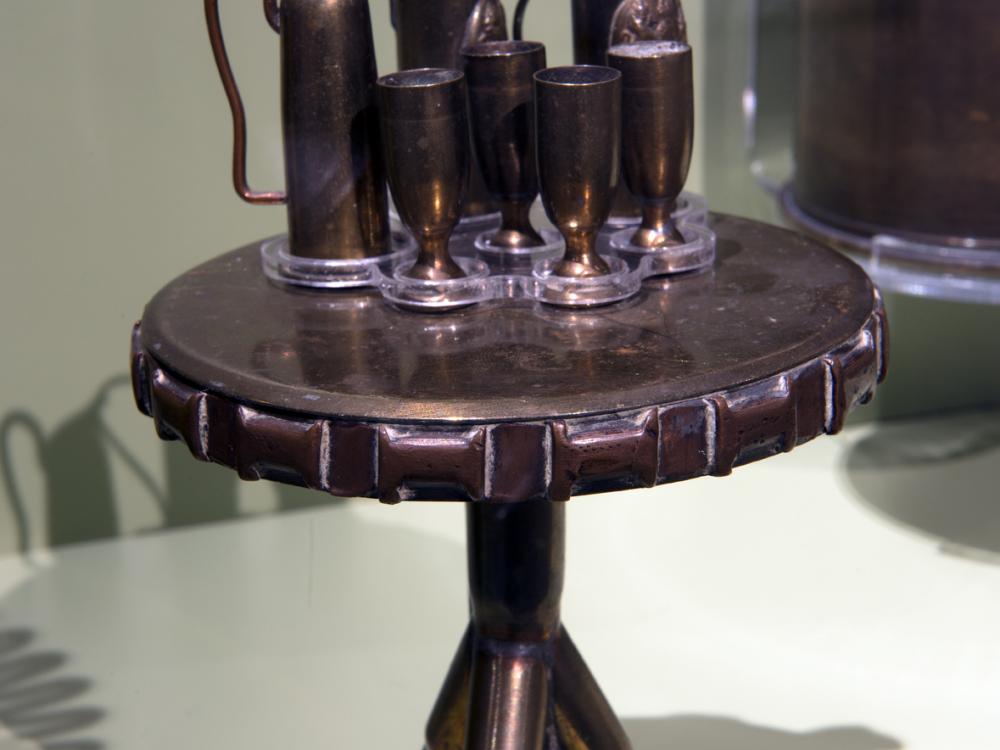

Trench Art
Apr 12, 2017

Apr 12, 2017
War souvenirs are as old as warfare itself. Be they trophies of victory or personal keepsakes of combat experiences, soldiers have always saved material evidence of their wartime service. Some, if they had the skills, turned the materials of war into art.
The tradition of artistically handcrafting war souvenirs goes back to ancient times, but the practice flourished during the First World War. The abundance of items created by soldiers in World War I and in the years immediately after gave rise to the term “trench art.” Over time, the term has become generalized to refer to art made from ordnance or military equipment from any era.
Some trench art was actually made in the trenches. Other examples were made by soldiers convalescing in hospitals, or shortly after the war before they went home. The pieces were made as personal souvenirs, for family, or sold to other soldiers to earn money. Local civilians and laborers supporting the armies also crafted items from war debris they collected.
Vase made from artillery shell.
Lent by Association Soissonnais 14-18
Toy table and cups made from shell casing and bullets.
Lent by Association Soissonnais 14-18
Artillery shells made into decorative pieces.
Lent by Ted Hamady, Gift of Mary E. "Mother" Tusch
These artifacts from the exhibition Artist Soldiers are tools that were used in trench warfare during WWI.
Letter openers made from French, German, and American bullets.
Lent by Ted Hamady
Charm bracelet featuring miniature Croix de Guerre medals and city crests from Reims, Nancy, Verdun, and Maubeuge.
Gift of Edna McCrane and Marion Wolanek
Miniature biplane model made from bullet with shell casing base.
Lent by Ted Hamady
Hand painted U.S. Army Air Service helmet, decorated with the insignia of the 135th Aero Squadron.
Gift of Harry J. Hoesly
H. Eisele, a German prisoner of war in an American camp, engraved these mess kits. One with a Prussian eagle with his name inscribed. The other with an American eagle, inscribed to John W. Goodsell, a doctor in the medical corps of the AEF.
Lent by Ted Hamady


We rely on the generous support of donors, sponsors, members, and other benefactors to share the history and impact of aviation and spaceflight, educate the public, and inspire future generations. With your help, we can continue to preserve and safeguard the world’s most comprehensive collection of artifacts representing the great achievements of flight and space exploration.
We rely on the generous support of donors, sponsors, members, and other benefactors to share the history and impact of aviation and spaceflight, educate the public, and inspire future generations. With your help, we can continue to preserve and safeguard the world’s most comprehensive collection of artifacts representing the great achievements of flight and space exploration.